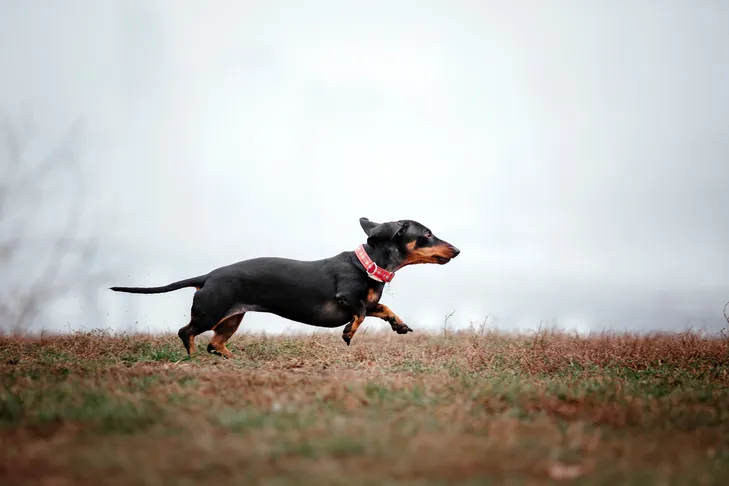It’s a familiar scenario for many dog owners: you call your dog, expecting them to abandon their current fascination and return to you immediately, only to watch them continue sniffing the ground, seemingly oblivious. Asking your dog to instantly stop what they’re doing and come back is a significant request, yet a reliable “come” or recall command is one of the most vital skills your dog can learn. It’s not just about convenience; it’s a potentially lifesaving tool, ensuring your dog’s safety in emergencies. If you’ve ever wondered, “How Do You Train A Dog To Come To You?” you’re in the right place. This guide will walk you through building a solid, reliable recall, making your dog’s safety and your peace of mind a reality.
Building the Foundation: Name Recognition and Collar Grabs
Before you dive into teaching the “come” command, establishing foundational communication is crucial. Your dog needs to understand two key things: their name means “pay attention to me,” and a collar grab is a positive, non-threatening interaction.
Teaching Your Dog Their Name
The first step in understanding how to train a dog to come to you effectively is ensuring your dog recognizes and responds to their name. When they hear their name, they should look to you, ready for further instructions. Follow these simple steps to play the name game:
- Start in a quiet environment with no distractions.
- Say your dog’s name in a happy, inviting tone. The instant they look at you, mark the behavior with a verbal “yes!” or a clicker, and then immediately offer a high-value treat.
- Repeat this several times in short sessions throughout the day.
- As your dog consistently looks at you when their name is called, gradually introduce minor distractions.
- Increase the distance between you and your dog before calling their name.
Soon, your dog will associate their name with positive rewards and readily offer you their attention. This focus is the critical first step towards a reliable recall. Beyond recall, a focused dog is also easier to engage in other activities, like learning good tricks to teach a dog.
 Cavalier King Charles Spaniel sitting patiently on a paved path in a park, demonstrating good focus.
Cavalier King Charles Spaniel sitting patiently on a paved path in a park, demonstrating good focus.
Mastering the “Gotcha” Game (Collar Grab)
Another vital preliminary skill, especially for emergency situations, is teaching your dog that having their collar grabbed is a positive experience. Many dogs instinctively pull away when you reach for their collar, but for their safety, you need to be able to secure them quickly. This “gotcha” game also helps with everyday tasks like clipping on a leash or guiding them to the bath. Just like with name recognition, you’ll teach your dog that a collar grab leads to something delicious.
- Lure your dog close to you with an irresistible treat. As they approach, let them lick or nibble the treat, but keep a hold of it for now.
- Gently and slowly reach for their collar, saying “gotcha” as you do. Once you have a light grip, release the treat completely so they can eat it.
- As your dog becomes comfortable, gradually make your collar grabs quicker and a bit firmer.
- Once they are consistently comfortable, wait to offer the treat until after you’ve said “gotcha” and secured their collar.
- Practice this exercise in various locations to generalize the positive association.
Once your dog understands that collar grabs are a good thing, you won’t face resistance when you need to restrain them after they’ve responded to your “come” command. This prevents them from running off again just as you reach for them.
 A happy Dachshund running freely through a sunny green field, demonstrating a dog in motion who needs a strong recall.
A happy Dachshund running freely through a sunny green field, demonstrating a dog in motion who needs a strong recall.
Step-by-Step Guide to Training the “Come” Command
Now that your dog has a solid foundation, you’re ready to teach the actual recall. The core principle here is to make yourself the most exciting thing in your dog’s environment. If you’re the source of all fun, your dog will naturally want to gravitate towards you. Avoid sounding angry or boring; your enthusiasm is key!
Start your training in a calm, quiet environment with minimal distractions and your dog on a leash. This low-competition setting makes it easier for you to capture their attention. Always use high-value rewards that your dog absolutely loves – whether it’s their favorite squeaky toy or a special piece of chicken. Make coming to you the most rewarding experience possible.
- Initial Steps on Leash: With your dog a few feet away, say their name, then “come!” Enthusiastically entice them by patting your legs, making kissy noises, or clapping. The moment they approach, mark the behavior (click or “yes!”) and deliver their favorite reward with enthusiastic praise.
- Increase Distance: Once your dog reliably comes from a short distance, let them wander to the end of their 6-foot leash before calling them back. Repeat the name-cue-entice-mark-reward sequence.
- Off-Leash Indoors: Move to a quiet, enclosed room where you can let your dog off-leash. Call their name, then “come!” To encourage their approach, try running backward as you call them. Dogs often enjoy a good chase, and this can make you even more appealing! If you’re struggling with your dog’s behavior, sometimes understanding why a dog tries to break out of crate can offer insights into their motivation and help you adapt your training.
- Vary Locations: Practice your recall in different rooms of your house. Consistency in varied settings helps generalize the behavior.
- Add a “Sit” on Arrival: When your dog consistently comes running to you, add a “sit” command as soon as they arrive. Once they sit, mark, praise, and reward. This ensures your dog remains stationary upon arrival, rather than bouncing away after getting their treat.
- Integrate “Gotcha” Periodically: Every few recalls, incorporate a gentle “gotcha” collar grab before releasing the treat. This reinforces that being held is a good part of the recall process. This also helps maintain control, much like knowing how to get a dog to stay off furniture gives you control over their boundaries.
Remember to be generous with praise, petting, and play whenever your dog responds to the “come” command. They should perceive coming to you as an incredibly fun and rewarding activity. You can also make training more engaging by playing recall games, such as “round robin” (where different family members call your dog in turn) or “find me” (where you hide in another room before calling your dog). These games reinforce the command in exciting ways.
 A charming French Bulldog wearing a stylish jacket walks confidently along a scenic path in a park, demonstrating a well-behaved dog on a walk.
A charming French Bulldog wearing a stylish jacket walks confidently along a scenic path in a park, demonstrating a well-behaved dog on a walk.
Introducing Distractions and Outdoor Training
Once your dog reliably performs the “come” command anywhere inside your home, it’s time to introduce distractions. Start small: another family member quietly in the room, someone cooking in the kitchen, or you gently tossing a ball in your hand. Gradually increase the level of distraction over time.
Next, take your training outdoors. It’s crucial not to let your dog roam free immediately, even if their indoor recall is 100%. The outdoor environment presents a whole new level of distractions. Begin with your dog on a standard 6-foot leash and repeat all the steps you practiced indoors. As they master this, graduate to a longer line—a 20-foot or 30-foot training line. Slowly allow your dog more distance on the long line while you continue to practice. The long line isn’t for reeling your dog in if they ignore you; rather, it’s a safety measure to control the situation. If they don’t respond, simply gather the line, walk closer to them, and try again. For dogs who pull on the leash, mastering recall on a long line can be a great precursor to teaching them how to teach my dog not to pull during regular walks.
If your dog starts ignoring your commands, it’s a sign to troubleshoot your training. There could be various reasons why your dog isn’t coming when called. It often means you’ve asked for too much, too soon. Take a few steps back in your training, return to a less distracting environment, and build confidence again. With consistent practice and patience, your dog can develop a reliable recall anywhere and anytime. However, always remember that even the best-behaved dog isn’t 100% perfect. Therefore, only allow your dog off-leash in safe, designated areas where you are confident in their response.
Conclusion
Teaching your dog to “come” is one of the most important commands you can instill, offering both convenience and critical safety. By understanding “how do you train a dog to come to you” through foundational exercises like name recognition and positive collar grabs, then progressing through a step-by-step recall training process with high-value rewards and gradual distraction management, you can build an incredibly strong bond and ensure your dog’s well-being. Consistency, patience, and making yourself the most exciting part of their world are key to success. Start practicing these techniques today, and empower your dog with a skill that could save their life while strengthening your unique connection.
